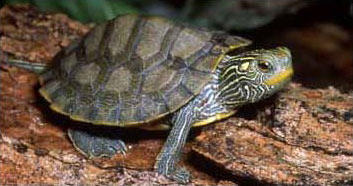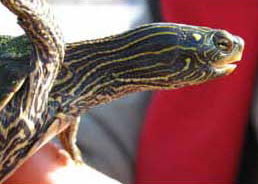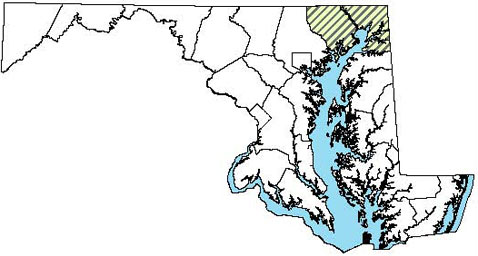Field Guide to Maryland's Turtles (Order Testudines)
Main_Content
Northern Map Turtle (Graptemys geographica) | | Common Name: |

Photo of Northern Map Turtle courtesy of Jim Harding
|
Size: 3 ½ inches - 11 inches |
Appearance:
- The northern map turtle is so named because the yellowish orange thin lines on the olive carapace (top shell) resemble contour lines on a topographic map.
- The carapace is moderately keeled and the rear edge of the shell is serrated.
- The plastron (bottom shell) is yellow with no patterns.
- There is one yellow spot behind each eye.
- The “lips” look full due to the broad light-colored jaw.
- Females are much larger than males.

Photo of Northern Map Turtle
courtesy of Jay Killian
|
Habitats:Prefers the deep or shallow parts of slow-moving rivers, large streams and lakes. Needs plenty of vegetation, muddy bottoms and abundant basking sites.
|
How to Find:This turtle is rarely seen away from water. In the spring, males can be seen swimming in front of females as part of the courtship dance. Use binoculars to survey basking sites along slow rivers. If you get too close, the turtles will drop back into the water.

Photo of Habitat for Northern Map Turtle
courtesy of Sara Weglein
|
Distribution in Maryland:Found only in Harford and Cecil Counties along the Susquehanna River. This turtle is listed as State Endangered. If found, please report sightings to the Maryland Wildlife and Heritage Service.

|
|
